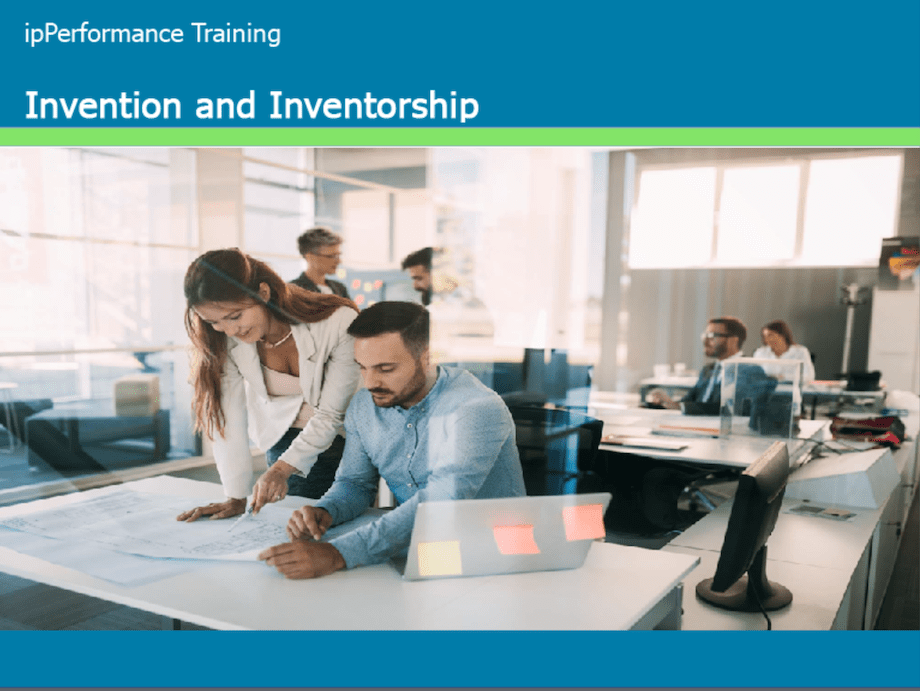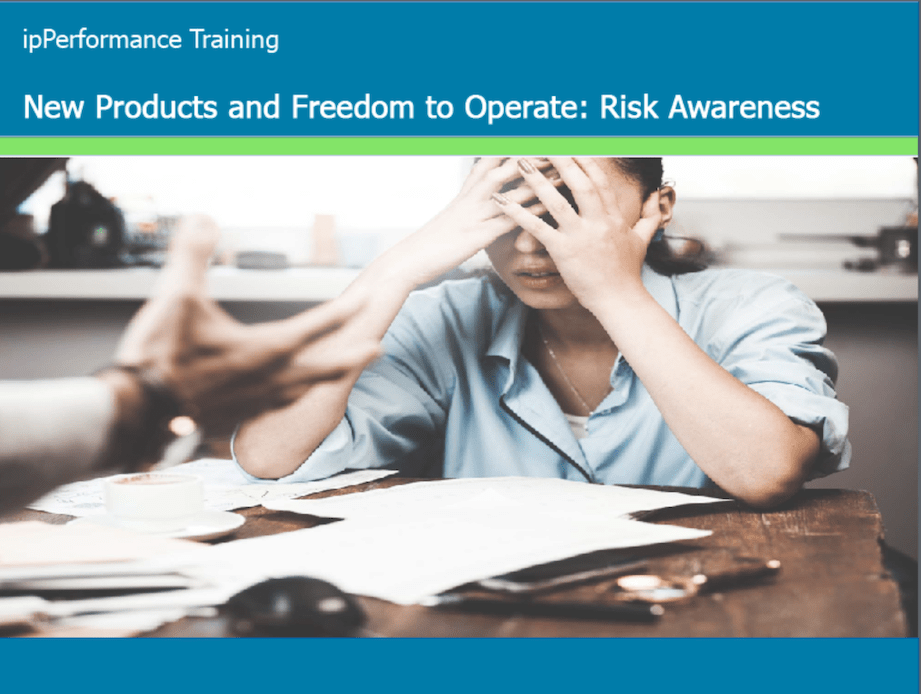Intellectual Property Training for Research, Development, and Engineering
Intellectual Property Training that encourages invention protection and smart decisions to avoid risk.
The Intellectual Property Training for Research Development and Engineering training curriculum is geared toward Research Development and Engineering employees. It reinforces company intellectual property concepts, practices, processes, and essential technology-related intellectual asset topics to ensure that technology employees will recognize and respond appropriately to circumstances that arise during their work. In addition to intellectual property principles, the technology-related topics discussed include inventorship, completing an invention disclosure, obtaining a patent, safeguarding proprietary information, conducting freedom to operate searches, and handling unsolicited ideas.
Key Learning Points
- What is intellectual property (IP), and what types of IP
- What are patents – design and utility patents
- Inventorship – the difference between invention and inventorship
- What are the basic requirements of patentability
- How do patents benefit the company – make money for your company
- Patenting process – process flow – invention submission, review, patent preparation, and prosecution
- How to complete an invention disclosure and submit your ideas
- Evaluation criteria for invention submissions: relevance, ease of design around, detectability, and value
- Inventor Rewards – Incentives and benefits to employees
- Interacting with third parties – handling proprietary information
- Risk of publication after filing a patent application
- Understanding patent claims for freedom to operate and product clearance
- Search and prior art concepts – novelty, product clearance, and freedom to operate
Patenting Process
Invention Disclosure, Review, Prosecution, and Grant
This course introduces the Research Development and Engineering (Developers/Engineers/Scientists) and manufacturing personnel to the business processes by which the company ensures its technical developments are appropriately protected and that IP-related risks are sufficiently managed (and that it has the freedom to operate its business). This course teaches the critical elements of the Invention Disclosure Form and patent application required to gain internal approvals and successfully secure a granted patent.


Reading Patents and Claims
This 15-minute course will provide R&D employees with an overview of patents, structure, and critical characteristics of sections of the patent. Additionally, employees will learn what to look for when reviewing the company’s or competitors’ patents.
Invention and Inventorship
Invention and inventorship are essential to innovation and patent procurement. While you may participate in the invention process, you are not necessarily considered an inventor by law. This course aims for employees to understand the invention stages and the legal inventorship requirements stipulating who can be identified as an inventor of patentable subject matter.


Completing an Invention Disclosure
An Invention Disclosure Form is a formal document that an inventor uses to describe their invention and the background of the invention, which they believe is patentable technology, designs, or processes. This form transmits pertinent technical and business information to the Patent Department. This course is a step-by-step overview of a standard Invention Disclosure Form and how to complete it. It covers the process of invention disclosure, terminology, and essential concepts.
Business Importance of Intellectual Property
The Business Importance Intellectual Property training course is designed to give technology personnel a basic understanding of intellectual property, its protection, why these assets are essential to this business, and what is expected of all personnel.
This course aims to clarify the different types of intellectual property/intangible assets the company creates so that all employees will understand the importance of handling and protecting them.


New Product and Freedom to Operate
Patent infringement risk for new and enhanced products is a significant concern for innovation-driven companies. The Freedom to Operate and Product Clearance course reviews proactive risk assessment to avoid unnecessary commercial exposure that can have substantial financial and business costs to the company.
Learn how we provide intellectual property training that is relevant and effective.